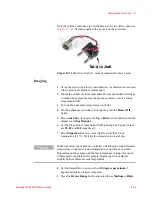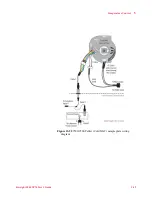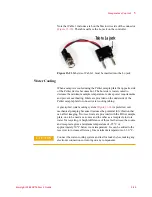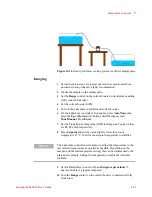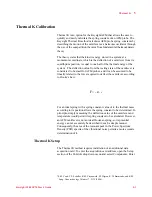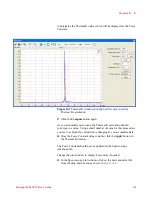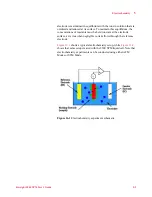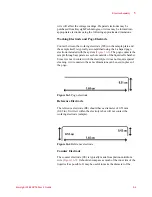
Thermal K
5
Keysight 5500 SPM User’s Guide
5-3
Thermal K Calibration
Thermal K is an option for the Keysight AFM that allows the user to
quickly and easily calculate the spring constant of an AFM probe. The
Keysight Thermal K method calculates AFM probe spring constants by
describing the motion of the cantilever as a harmonic oscillator through
the use of the equipartition theorem from fundamental thermodynamic
theory.
The theory states that the kinetic energy stored in a system at a
momentum coordinate, which is the deflection of a cantilever from its
equilibrium position, is equal to one half of the thermal energy of the
system.
*
The deflection value from the resting state of the cantilever is
considered to be small for AFM probes, and it can be assumed to be
linearly related to the force required to deflect the cantilever according
to Hooke’s Law:
For an ideal spring with a spring constant value of k, the thermal noise
according to its position allows the spring constant to be determined. In
principle, simply measuring the deflection value of the cantilever and
temperature would permit its spring constant to be calculated. However,
an AFM cantilever is not an ideal Hookean spring, so its potential
energy can not accurately be described in such a simple manner.
Consequently, the area of the resonant peak in the Power Spectrum
Density (PSD) spectra of the vibrational noise permits a more accurate
determination of k.
Thermal K Setup
The Thermal K method requires installation of an additional data
acquisition card. To enter the acquisition card address, open the Setup
section of the Controls drop down menu and select Components. Enter
*S.M. Cook, T.E. Schaffer, K.M. Chynoweth, M. Wigton, R.W. Simmonds, and K.M.
Lang,
Nanotechnology
Volume 17, 2135 (2006).
F= -
x

